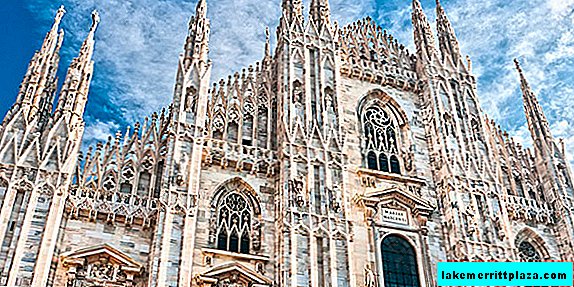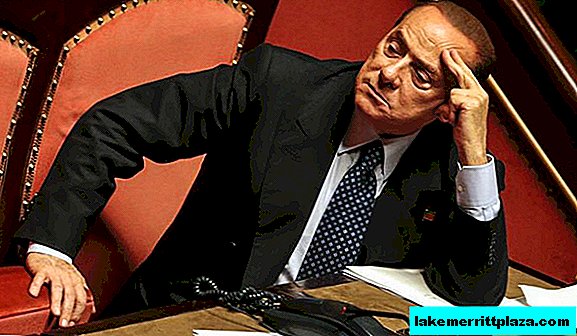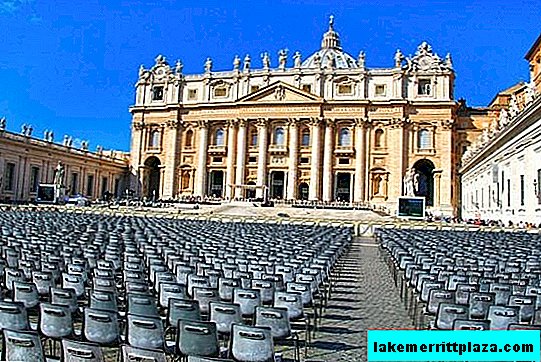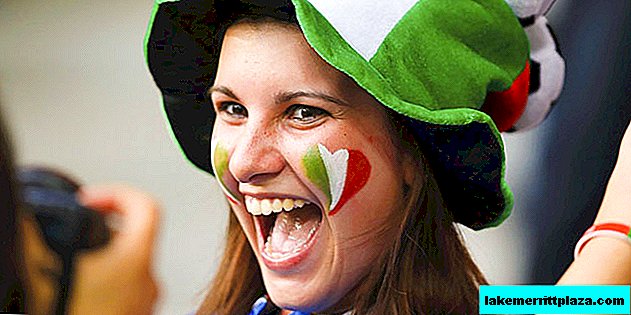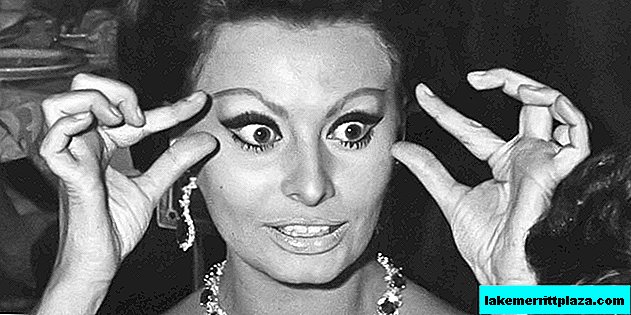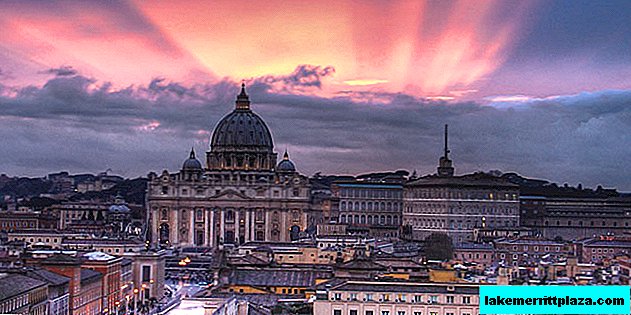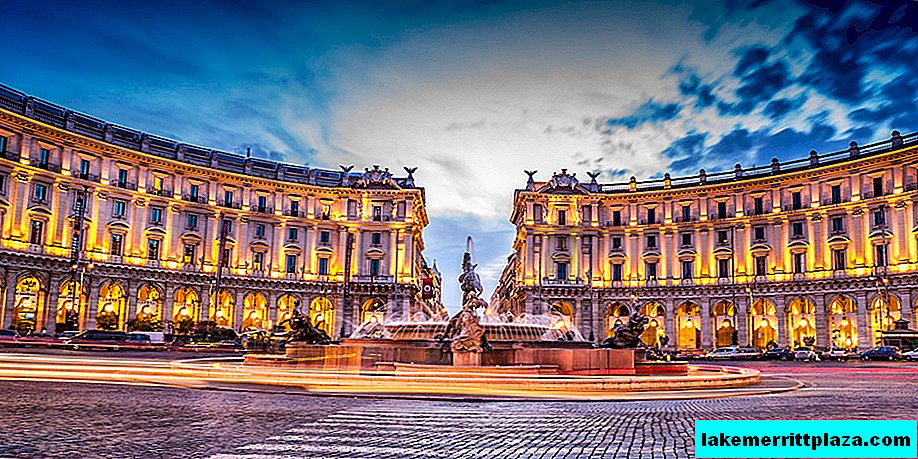The Roman Forum - was once the center of life in Rome and the Roman Empire; later - an abandoned urban wasteland and pasture; today it is a place of pilgrimage for tourists and archaeologists. Just walking through the ancient ruins is not interesting. It becomes interesting when you know the story and understand how these ruins are connected with past events and specific people. Then the imagination enlivens the ruins.

Roman Forum (Foro Romano)
The Roman Forum (Italian: Foro Romano, Latin Forum Romanum) - the first of the forums in Rome, built in the VI century BC Forum Romanum was created to become the focus of life of the "eternal city".
The architectural complex of the Forum includes the square and adjacent buildings. Most of the ancient structures are preserved in the form of foundations and ruins; part of the buildings was irretrievably lost.
Today we call a "forum" any thematic meeting of people. The Roman Forum served the same purposes in ancient times. From his stands were heard the speeches of eminent Roman speakers, politicians, military leaders. It was the main arena of public gatherings and festivals. All the most important city events took place at the Forum.
Forum construction history
Ancient period
Swampy wasteland, pierced by numerous springs and surrounded by hills, has long served as a burial place. Settlements were located on the hills, and in the valley they still continued to bury.
During the reign of Tarquinius the Ancient, canals and drainage systems were laid in the wetlands. The site for the construction of the Forum was drained and cleared. The construction of the square, which was intended to perform several functions, began. Part of the space was reserved for trade - public and religious, political and judicial events were to take place in the remaining area.
The objects of this period are considered the altar of the volcano, the foundation of Regia, black stone, the foundation of the sanctuary of Venus-Cloakina.
Republican period
Shops and workshops, temples and oratorical stands gradually grew on the square. (The shops of the merchants were subsequently withdrawn from this square and formed separate small forums). On the outskirts of the square at the foot of the hills were built the houses of Roman aristocrats. The house of the great pontiff stood on the southern part of Via Sacra - the Sacred Road to the Capitol. The temple of Castor and Pollux was rebuilt, new roads were laid.
In the period from IV to V centuries BC the main public buildings of Rome were temples. In the basilicas of ancient Rome, public meetings and courts were held; coins were minted in the temple of Juno, and the temple of Saturn served as a treasury. In the republican period, mass gatherings of people gradually moved to open areas.
2nd century BC marked by a growing fashion for praising the political elite. At the forum, numerous monuments were erected in honor of politicians. The tradition was stopped by the decision of the censors - all the monuments were removed from the Forum, with the exception of the monuments established by the general decision of the people and the Senate. Until the end of the II century BC. e. The forum was the place where the achievements of the citizens of Rome were honored. But in I BC e. it becomes a platform for the struggle of individual politicians.
Imperial period

"Navel of the Earth" (Umbilicus urbis), photo by Karlheinz Meyer
During the reign of Augustus, the Forum expanded and became the main center of urban life. During this period, the Golden Milestone was erected - a gilded column marking the beginning of all the roads of the empire. The Forum also had its own "Navel of the Earth" (Umbilicus urbis) - a marble monument at the intersection of main streets, marking the center of Rome and the World. According to legend, the monument was installed by Romulus himself.

Basilica of Maxentius and Constantine (Basilica di Massenzio)

The ruins of the Basilica of Maxentius
After the death of Augustus, the activity of the forum declined. In the era of Maxentius and Constantine, the life of the Forum has intensified again. The basilicas of Romulus and Constantine (Basilica di Massenzio) were built. In the imperial era, all court hearings were moved to the basilica on the forum. Courts were attended by rhetoricians and students, sometimes even emperors were present there. The death penalty was also executed on the Forum Square, and Cicero demanded that they be transferred to the Field of Mars, so as not to desecrate the sanctuary with the blood of criminals.
Middle Ages

Church of Santi Luca e Martina (Chiesa dei Santi Luca e Martina)
During the development of Christianity, the Forum was built up with Catholic churches: in the building of the curia - the church of St. Adrian, on the Sacred Road - the church of St. Bacchus and St. Sergius, on the site of the temple of Peace - the church of Santi Cosma e Damiano, in the temple of Saturn - San Salvatore- de Stater, in the basilica of Julia - the church of Santa Maria in Cannapara, in the temple of Antoninus and Faustina - Santa Maria in Miranda. Pre-existing buildings were also adapted for Christian parishes.
In the VIII century, the forum lost its religious and social significance and became desolate. He became known as the "Cow Field" - Campo Vaccino. Cattle grazed on a deserted area overgrown with grass. Until 1080, the Forum was in an abandoned state - moreover, it was gradually turned into a garbage dump. Only in the Renaissance did interest in the buildings on the Forum rise again, the first works on the topography of ancient Rome were published. By that time, many structures were already put into construction materials.
Forum today
Many of the ancient buildings, ruins and preserved monuments can be seen by our contemporaries at the Roman Forum. The first excavations here were carried out in 1547, at the direction of Pope Paul III. In the XIX - XX centuries. large-scale excavations began, which were mainly carried out by French archaeologists: 1803 - the arch of Septimius Severus, until 1836 - the temples of Saturn, Vespasian, Dioskurov and Concordia, from 1870 - layers of late antiquity of the 4th and 5th centuries, 1898 - the commissio, Emilia Basilica, an ancient cemetery, the temple of Vesta and the source of Yuturna. During the fascist regime, excavations were superficial - therefore, many valuable artifacts were lost, a significant part of the information was also lost. Nevertheless, with the help of these studies, the appearance of many objects was reconstructed or recreated at least in the images.
Church of San Lorenzo in Miranda

Church of San Lorenzo in Miranda (Chiesa di San Lorenzo in Miranda)
Today, the main entrance to the Forum is from Via dei Fori Imperiali. The first object is the church of San Lorenzo in Miranda (Chiesa di San Lorenzo in Miranda). It was built in 141. Initially, the temple served the cult of Anthony Pius and Faustina. With the advent of Christianity in Roman territories, the temple became Christian. In the XVII century it was reconstructed in the Baroque style.
Basilica of Emilia

The Ruined Basilica of Emilia (Basilica Aemilia)
The Basilica of Emilia (Basilica Aemilia) (179) is preserved only in ruins. Pliny called her the most beautiful temple of his time. The huge building was built of travertine and tuff, lined with white and colored marble. The temple completely burned down in 410, was partially rebuilt and destroyed again. The last fragmented restoration was carried out in the 30s of the XX century.
Curia Julia

Curia Julia (Curia Iulia)
Not far from these ruins is the building of Curia Iulia - the "heart" of ancient Rome. The Senate met here. In 283, the building burned down, but was completely restored. Polychrome marble tiles on the floor have been preserved from the original decor. In the 7th century, after many reconstructions, the Curia began to serve as a Christian church - thanks to this, the building was preserved.
Septimius North Arch

The Arc de Triomphe of Septimius Severus, photo by ruslan abdyushev
Beyond Curia stands the Arch of Septimius Severus (Arco di Settimio Severo). It was built in 205 and dedicated to the victories of the great emperor and his sons in two wars. The arch is well preserved. And today we can see the elegant stucco decoration of the central span, the reliefs of Victoria over the main portal, sculptural images of episodes of the Parthian war. Unfortunately, the quadriga with the figures of the emperor and sons on the main facade was lost.
Rostrum

Rostra (rostra), photo American Institute for Roman Culture
To the left of the arch of the North is Rostra (rostra). This is an oratory. According to ancient custom, it was decorated with the noses of the captured ships of Carthage - which is why it received a symbolic name.
Temple of Saturn
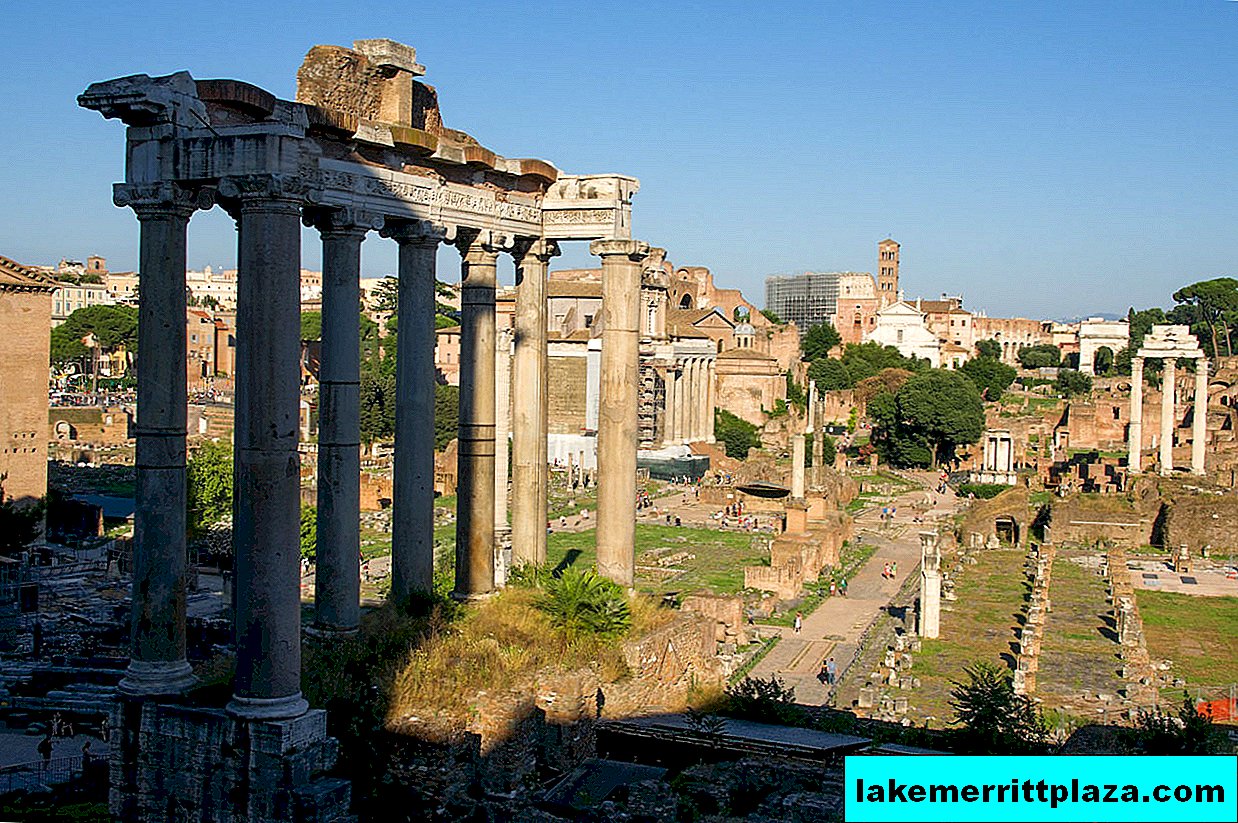
Temple of Saturn (Tempio di Saturno)
Behind Rostra are the remains of the temple of Saturn (Tempio di Saturno) (V century BC). 8 grandiose columns of the ionic order rise on a stone podium of 40 meters in length. Near the temple, the Romans celebrated the annual triumph - Saturnalia, when the differences between slaves and gentlemen were blurred. For many years, this temple was Erarium - a treasury with trophies recaptured by Mark Curius Camille from the Gauls.
Tabularium

Tabularium (Tabularium)
Near the columns of the temple of Saturn is the state archive - Tabularium (Tabularium). Its long staircase of 67 steps led from the Forum to the Capitol. Outside, the Tabularium is decorated with a Greek order; inside it consists of vaulted rooms located enfilade.
Column Foki

Colonna di Foca
In front of the Tabularia building is the main square of the Forum. Here stands the Triumphal Column of Foka (Colonna di Foca). It was erected in 608 and became the last monument erected at the Forum.
Today, at the main entrance of tourists, a mock reconstruction of the antique Forum is greeted. If you climb the Sacred Road to Capitol Hill, the ruins of the ancient square will appear in all their greatness. Such a grand open-air museum is no longer in the world. The ancient stones of the Forum keep the secrets of millennia, the mysteries of great civilizations.
Working hours
Daily from 8:30 to 17-19 hours, depending on the time of year.
Weekends: January 1, May 1, December 25.
Tickets
Combined ticket - € 12 (via the Internet - € 14);
children under 17 years old - free of charge.
The ticket gives the right to visit the Roman and Imperial Forums, the Palatine, the Colosseum and is valid for 2 days after the first visit.
Upon entering the Roman Forum give an audio guide.
How to get there
Take line B metro to Colosseo Station;
by tram 3, 8 to the Parco Celio stop;
bus 51, 75, 85, 87, 118, N2 - to Colloseo.
How do I save on hotels?
Everything is very simple - look not only at the booking. I prefer the search engine RoomGuru. He is looking for discounts at the same time on Booking and on 70 other booking sites.

